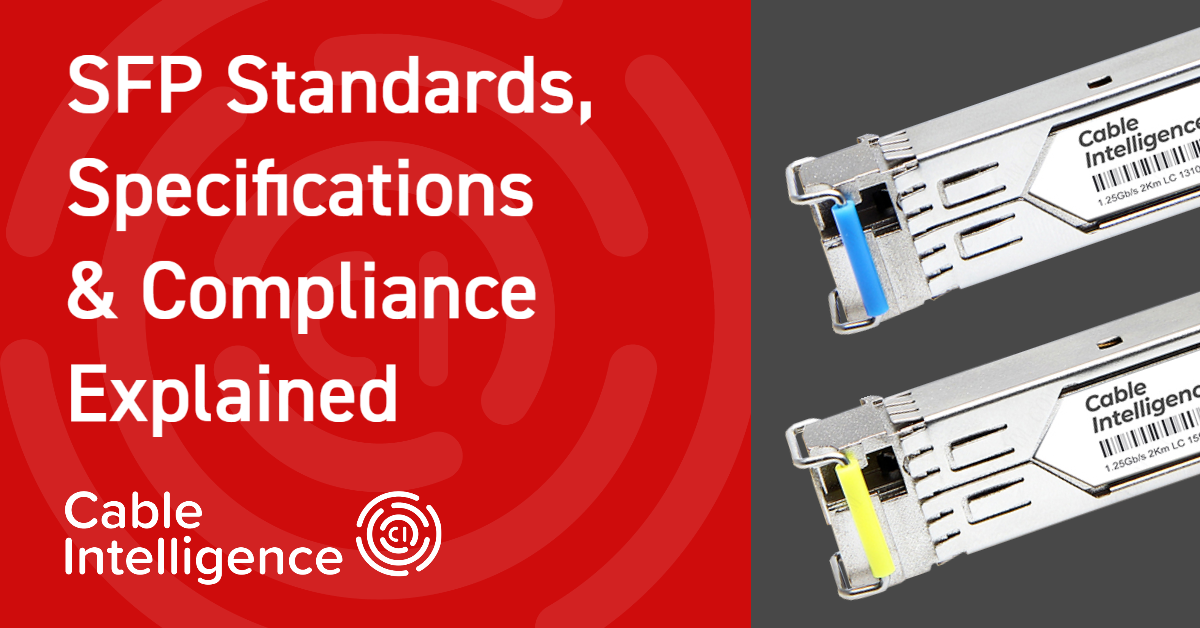While browsing our listings for SFP (short form-factor pluggable) Compatible Fibre Transceivers, you may have come across terminology and abbreviations you aren’t familiar with, such as MSA, SFF-XXXX and so on. This short article aims to explain these terms, so you can familiarise yourself with them and buy with confidence, knowing that they are the same as their official counterparts. So, without further ado, let’s get stuck in.
MSA
MSA stands for multi-source agreement. Essentially, this is where multiple manufacturers agree to create products that are compatible across vendors (so features such as dimensions, connectors etc. are kept the same) – this creates a competitive market, guarantees interoperability and drives innovation.
The beauty of this, is that it allows for the existence of compatible transceivers, that do exactly the same job and function just as well, for a fraction of the price of their official counterparts.
Some manufacturers have tried to subvert the standardisation of the SFP MSA by locking out transceivers from host devices that do not match vendor codes in an effort to push the premium OEM modules.
However, at Cable Intelligence, we have the ability to code our compatible transceivers for specific vendors, bypassing this mechanism.
Specifications
While browsing our transceiver listings, you’ll see that they are compliant with certain specifications, usually in the format ‘SFF-XXXX’. Specifications are essentially documents that outline how certain features within the transceivers work. For example, SFF-8472 outlines the characteristics for diagnostic monitoring which allows real time access to device operating parameters.
Most of the other specifications you’ll see in our listing are for outlining the actual transceiver characteristics themselves, for example SFF-8418 outlines the characteristics of the SFP+ 10Gb/s Electrical Interface, so you’ll find that in our 10G Transceiver listings.
The full database of specifications can be found here. Just search for the specification number and you can download and read the PDF documents: https://www.snia.org/technology-communities/sff/specifications
RoHS
You may already be familiar with RoHS (Restriction of Hazardous Substances Directive) as this directive covers a large swathe of electronic and electrical equipment. All our transceivers are RoHS compliant. Essentially, the directive it restricts the use of the following ten hazardous materials in the manufacturing of electrical equipment with an aim to reduce toxic electrical waste:
- Lead (Pb)
- Mercury (Hg)
- Cadmium (Cd)
- Hexavalent chromium (Cr6+)
- Polybrominated biphenyls (PBB)
- Polybrominated diphenyl ether (PBDE)
- Bis(2-ethylhexyl) phthalate (DEHP)
- Butyl benzyl phthalate (BBP)
- Dibutyl phthalate (DBP)
- Diisobutyl phthalate (DIBP)
We hope this article has helped demystify some of the confusing terminology that’s used in the world of SFP Fibre Transceivers and buy with confidence. As you can see, our compatible range of modules still conform to the safety directives, standards and specifications used by their OEM counterparts, but the cost saving can be substantial, even reaching into the thousands of pounds. We also offer custom label branding and of course, UK based Sales and Support.

